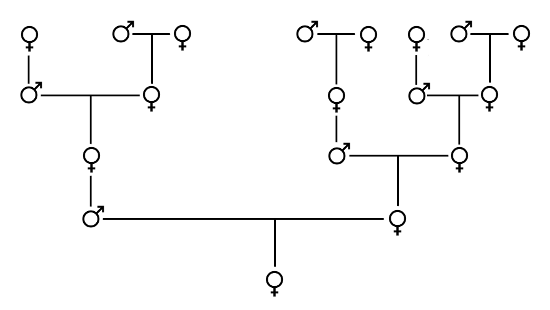Drones are male honey bees that are the product of an unfertilized egg. Drones are characterized by eyes that are twice the size of those of worker bees and queens, and a body size greater than that of worker bees, though usually smaller than the queen bee. Their abdomen is stouter than the abdomen of workers or queen. Although heavy bodied, drones must be able to fly fast enough to accompany the queen in flight. Unlike the female worker bee, drones do not have stingers.
Drones do not exhibit typical worker bee behaviours such as nectar and pollen gathering, nursing, or hive construction. Although drones are highly specialized to perform one function — mating and continuing the propagation of the hive — they are not completely without side benefit to the hive. All bees, when they sense the hive's temperature deviating from proper limits, either generate heat by shivering, or exhaust heat by moving air with their wings — behaviours which drones share with worker bees.

But as stated above, a drone's primary role is to mate with a fertile queen. Just like the eggs from which the workers bees and the next generation of queens are born, the eggs from which the drones are born are laid by the queen itself. As such, drones have mothers but no fathers, but they do have a grandfather. Females come from fertilized eggs, so they have parents of both sexes. This produces an interesting pattern: the number of males in a given generation equals the number of females in the preceding generation, and the number of females in a given generation equals the number of females in the preceding two generations.
| generation | 0 | 1 | 2 | 3 | 4 | 5 | 6 | 7 |
|---|---|---|---|---|---|---|---|---|
| number of female bees | 0 | 1 | 1 | 2 | 3 | 5 | 8 | 13 |
| number of male bees | 1 | 0 | 1 | 1 | 2 | 3 | 5 | 8 |
| total number of bees | 1 | 1 | 2 | 3 | 5 | 8 | 13 | 21 |
So the total number of bees — male and female — in generation $$n$$ is the Fibonacci number $$F_n$$. W. Hope-Jones discovered this relationship in 1921.
Input
The input contains a single integer $$n \in \mathbb{N}$$ that indicates the index of a generation, where generations are numbered starting from zero. We assume that the first generation (generation 0) exists of a single drone.
Output
Three lines of output need to be generated, which respectively give the number of female bees, the number of male bees, and the total number of bees in generation $$n$$. Take a look at the example below to see how the output should be formatted.
Example
Input:
7Output:
number of female bees: 13
number of male bees: 8
total number of bees: 21